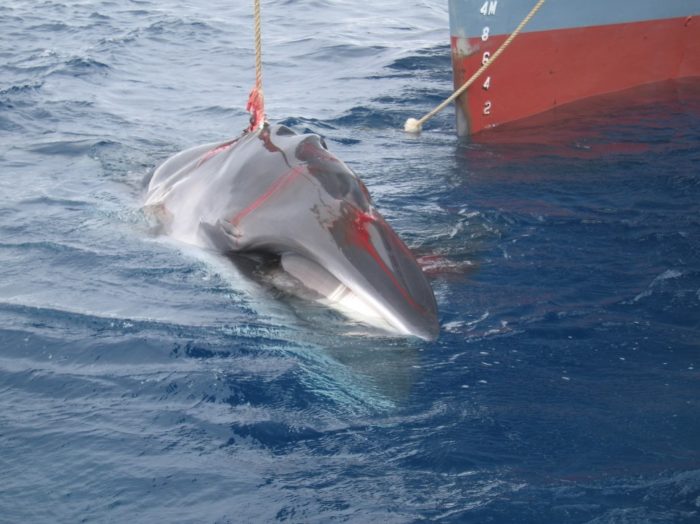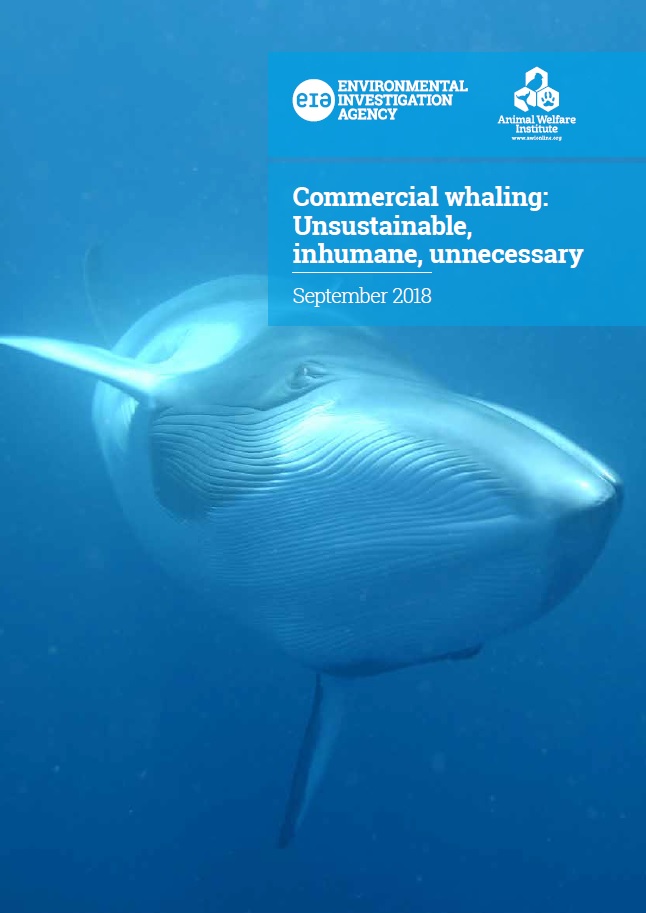Whaling without purpose: The unjustifiable commercial pursuit of peaceful ocean giants
During the 20th century, 2.9 million whales were killed by the commercial whaling industry – likely the single largest removal of any animal in terms of total biomass in human history..
Population after population was devastated, with sperm whales reduced to less than a third of their pre-whaling population size and blue whales by up to 90 per cent.
As global pressure to end the slaughter mounted, the International Whaling Commission (IWC) agreed a moratorium on commercial whaling from 1986 – a ban which undoubtedly saved many whale species from extinction.
Despite the vast majority of the world firmly consigning commercial whaling to the history books, nearly 40,000 whales have been killed since the ban came into effect. Japan, Norway and Iceland continue commercial hunts, selling and trading whale meat and other products. Iceland and Norway have lodged reservations to the moratorium, while Japan conducts commercial hunting under the guise of ‘scientific research’, despite a 2014 ruling by the International Court of Justice that its long-standing Antarctic programme was ‘not for purposes of scientific research’.
Commercial whaling serves no nutritional or economic purpose. Whale meat is not widely consumed in any of the three countries, despite the best efforts of government-backed marketing campaigns. Last year, just one per cent of Icelanders said they ate whale meat regularly and 82 per cent claimed to have never eaten it at all. In Japan, average consumption of whale meat was just 30g per person in 2015. Meanwhile, demand in Norway is so low that 60 tonnes of whale meat had to be given away in 2017due to poor sales.
As appetite for whale meat dries up and the quest to turn a profit grows increasingly desperate, the countries have looked to the animal feed market. In 2016, more than 113 tonnes of dumped whale products from Norway’s hunt were used as food for animals raised for the fur trade and in 2013 the dried flesh of endangered fin whales from Iceland was briefly touted as pet treats for pampered dogs in Japan.
The Japanese and Norwegian governments increasingly prop up their archaic whaling industries through subsidies and (unsuccessful) attempts to boost demand for whale products, while Iceland’s fin whale hunt is able to continue only through the whaling company’s profits from indirect shareholdings held in other corporations.
As well as serving no nutritional or economic purpose, commercial whaling is unsustainable. It poses an additional and unnecessary layer of risk to whale populations which are facing an increasing number of threats from other human activities. For example, Antarctic minke whales targeted by Japan are particularly exposed to the impacts of climate change. The fast recession of sea ice is rapidly altering their marine habitat and rising sea temperatures are depleting the krill populations which underpin the Antarctic food chain.
Bycatch – the lethal capture of non-target species during fishing, both accidental and intentional – off Japan, South Korea and China poses a serious risk to the depleted minke populations in this area, with scientists raising concern that Japan’s ‘scientific’ whaling in the North Pacific could reduce the population by as much as 20 per cent by 2030.

Minke whale harpooned by Japan’s whaling fleet (c) Australian Customs Service
Minke whales in Iceland and Norway have also seen declines in abundance during the past 20 years, thought to be due to factors including changes to key prey species. With the health of the world’s oceans under grave and growing threats from multiple human activities, there is clearly no way to estimate ‘safe’ or sustainable catch limits for commercial whaling.
The case for a permanent ban on commercial whaling is further strengthened by the role whales play as ‘ecosystem engineers’. A growing body of scientific research demonstrates that whales enhance marine ecosystems in several ways, from facilitating the transport of nutrients in the ocean and through the provision of massive pulses of organic enrichment to the sea floor when they die.
As governments meet in Brazil from 4 September for the 67th meeting of the IWC, it is imperative that they strongly reaffirm their support of the whaling moratorium indefinitely. With a mandate to manage and conserve whale populations, the IWC is increasingly turning its attention to the major conservation issues now faced around the world by whales, dolphins and porpoises. Japan’s proposals to resume commercial whaling fly in the face of these efforts.
The moratorium remains critical for the world’s great whales to continue their slow but steady recovery from the dark and bloody days of industrial whaling – and to help these magnificent creatures face the fresh challenges of survival in the 21st century.
A new report on commercial whaling, jointly released by us and the Animal Welfare Institute, is available to read and download from our special summary page.


